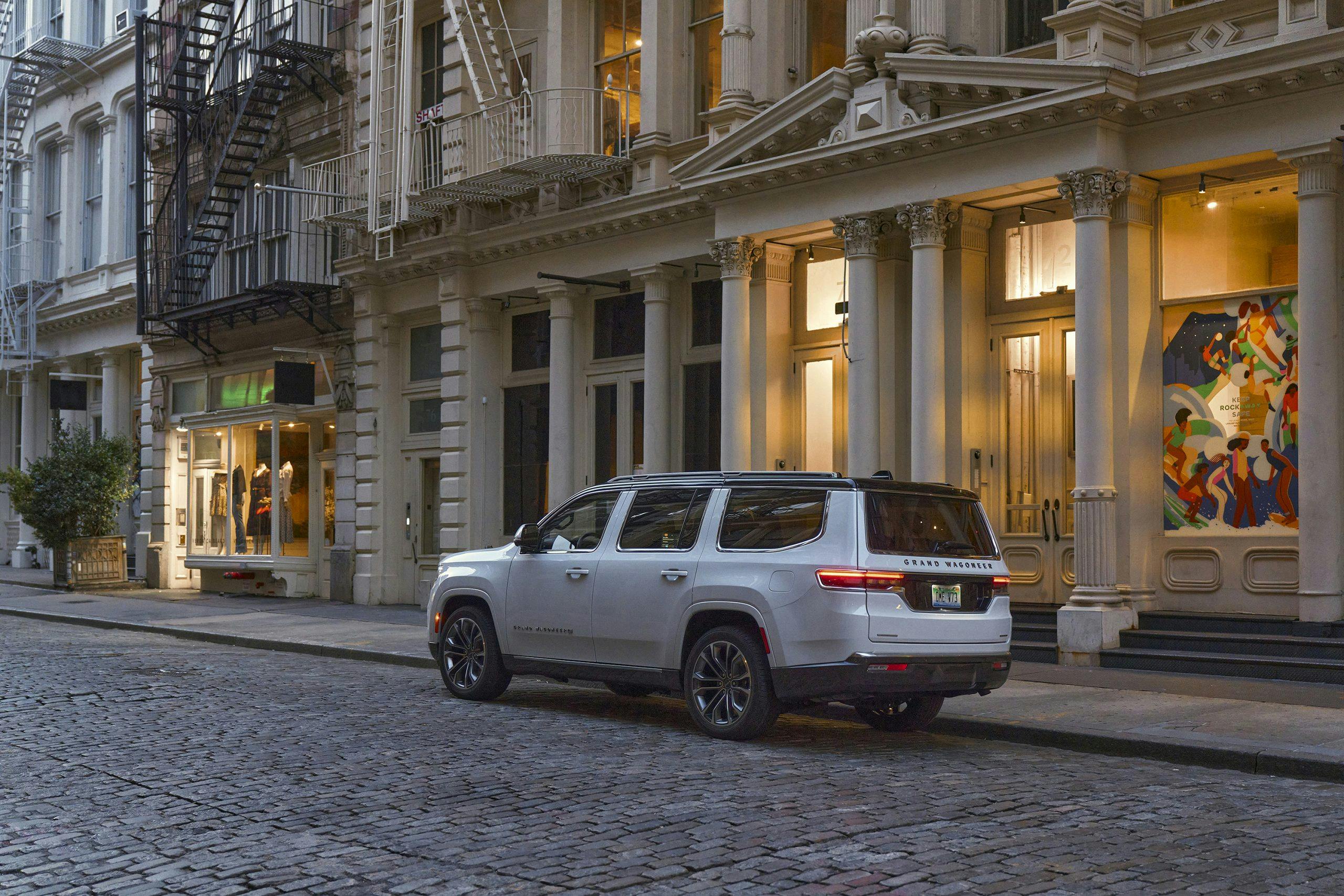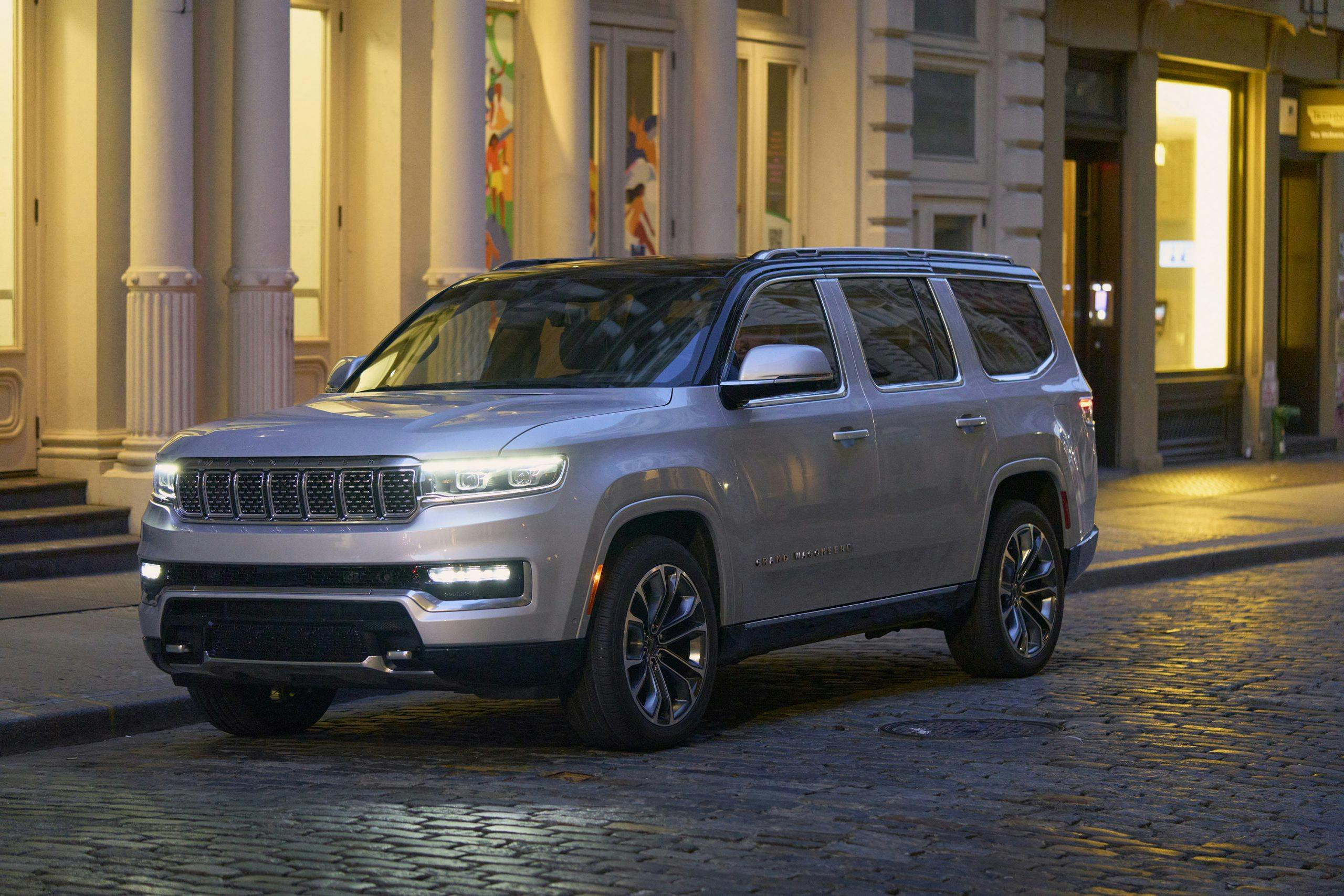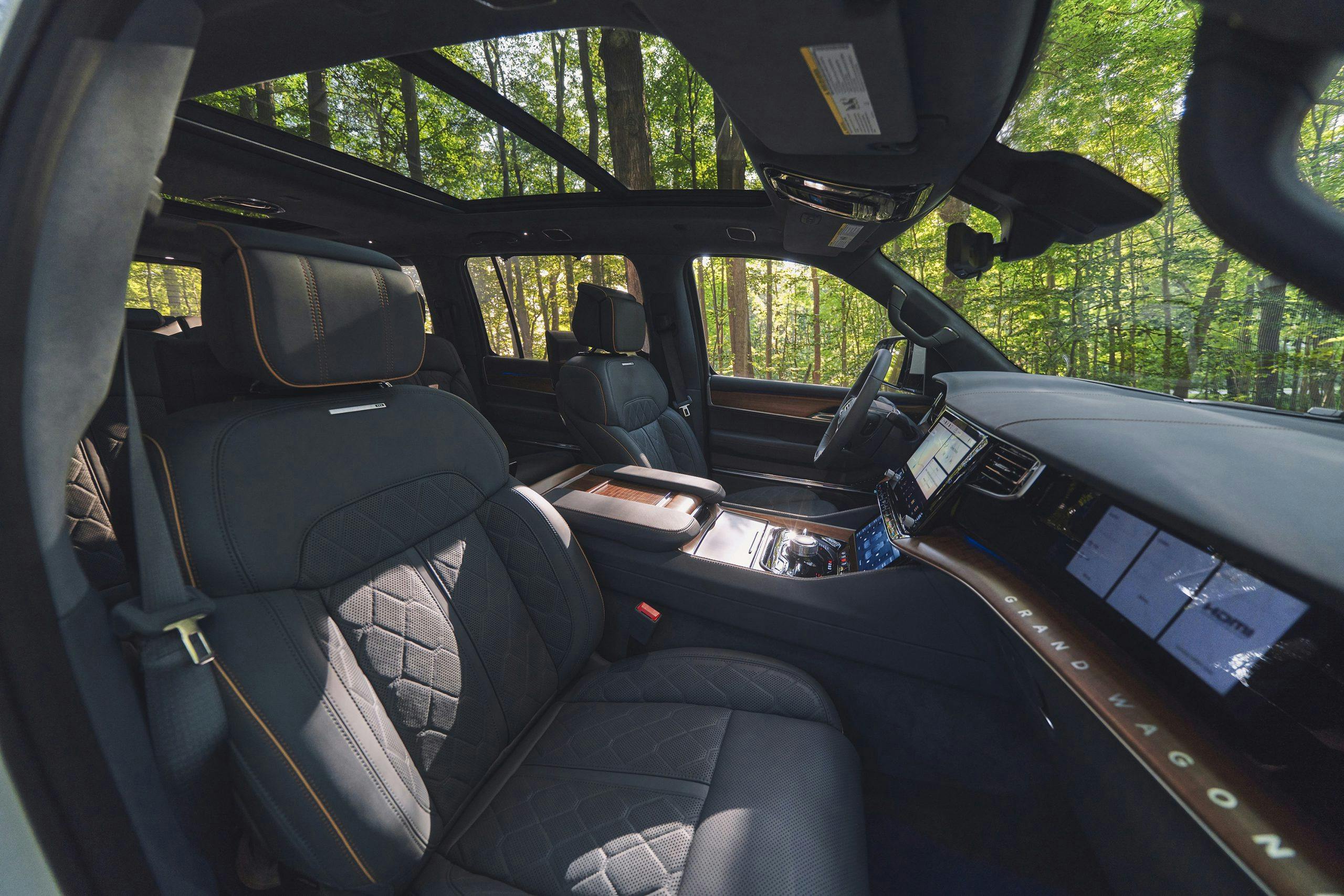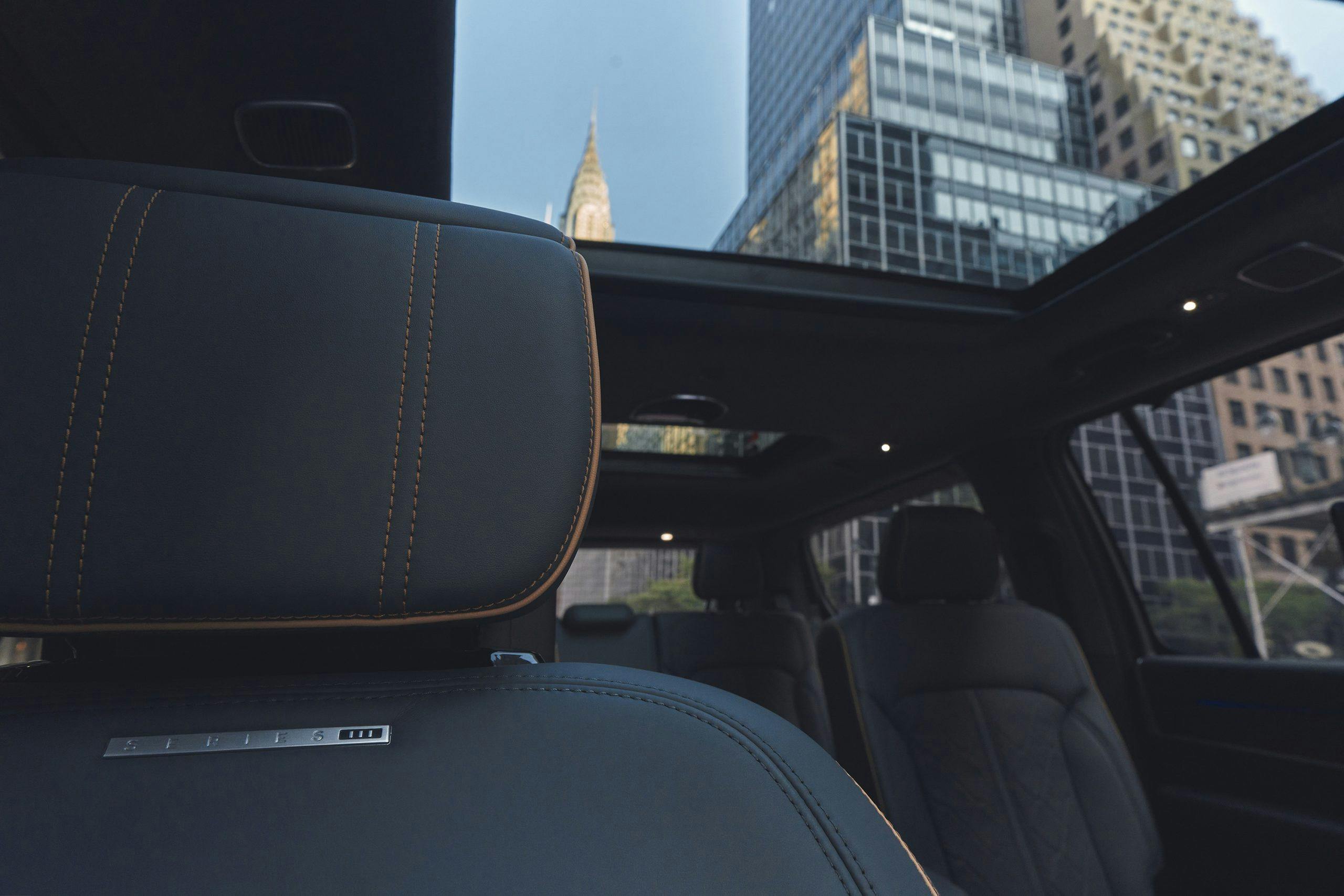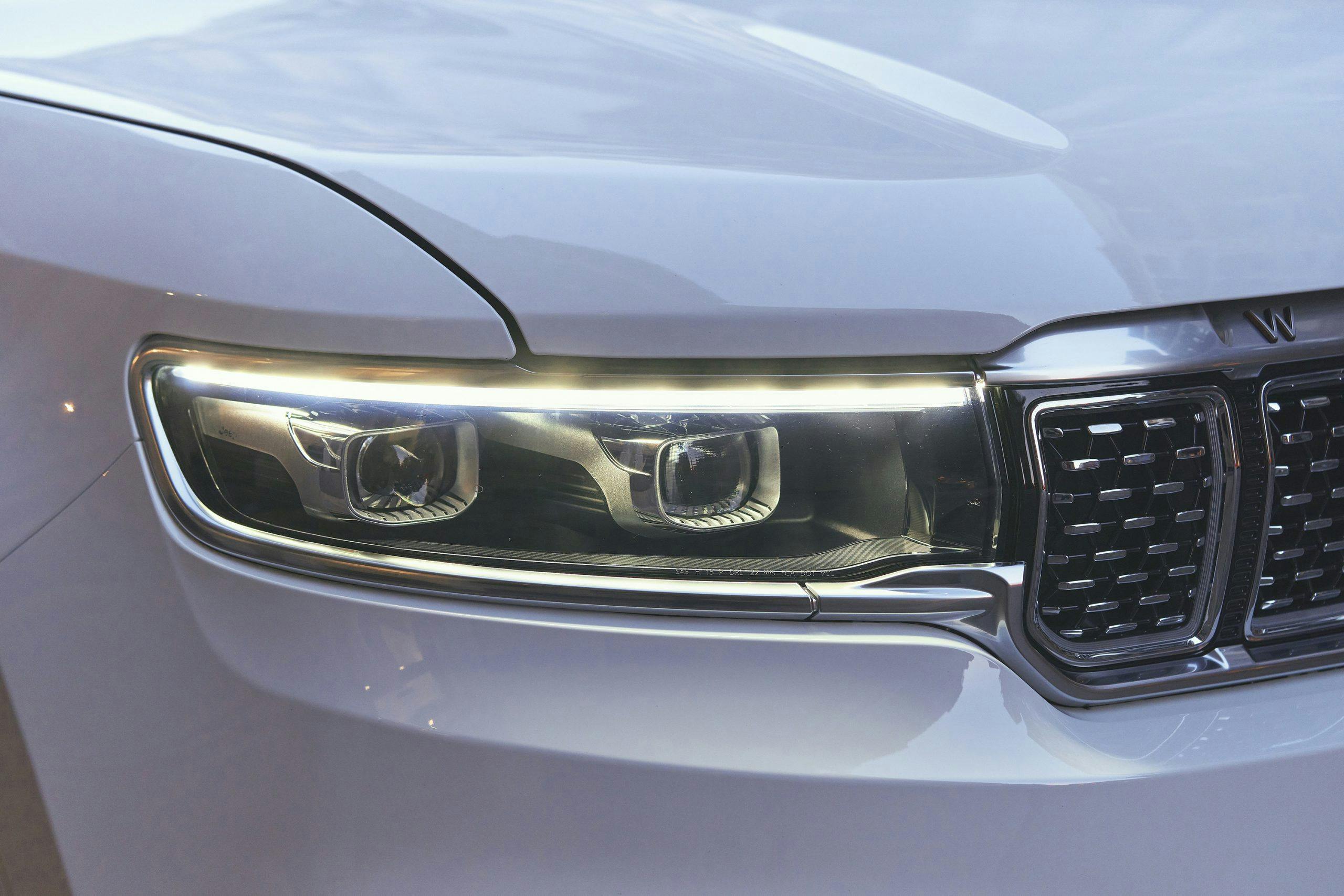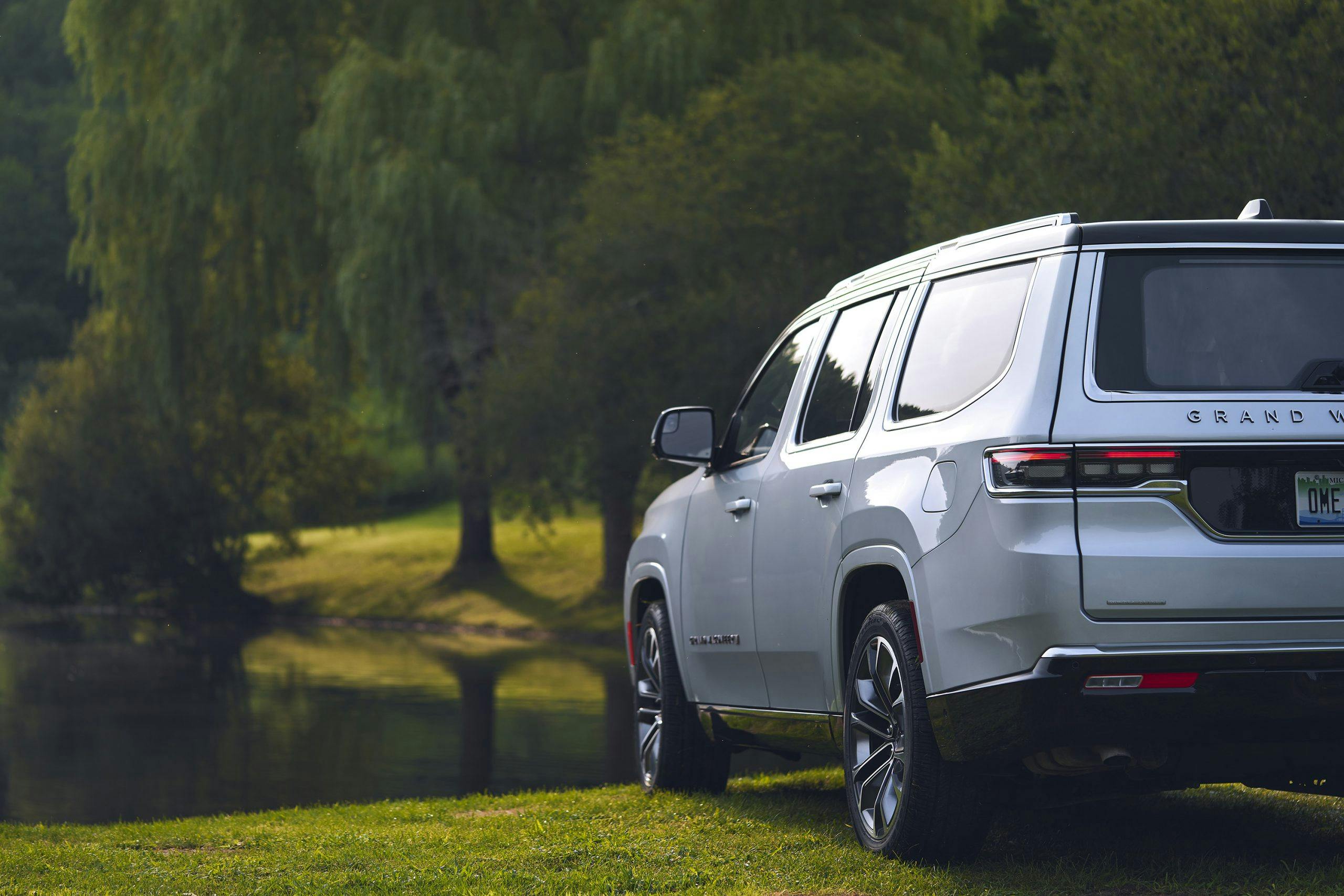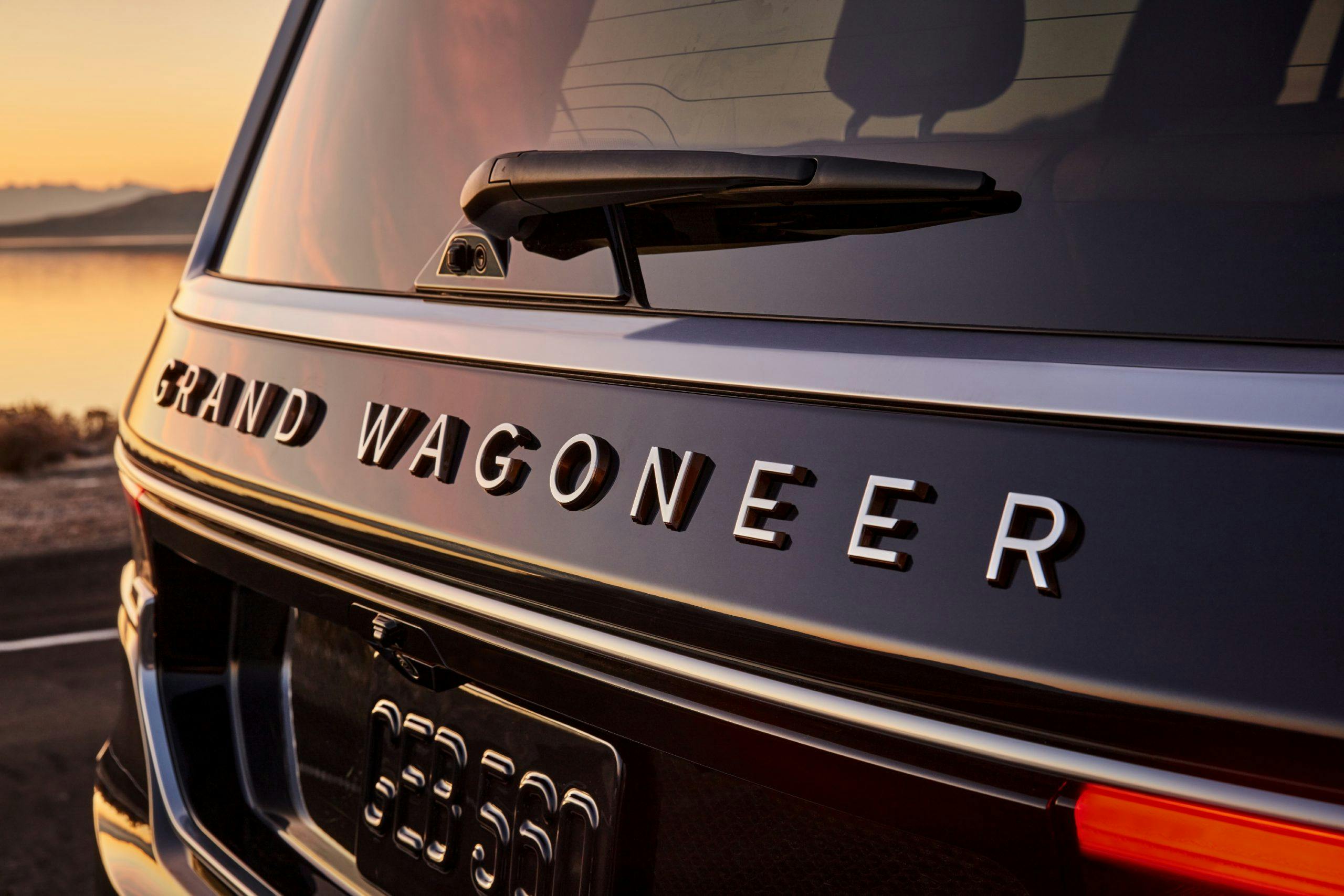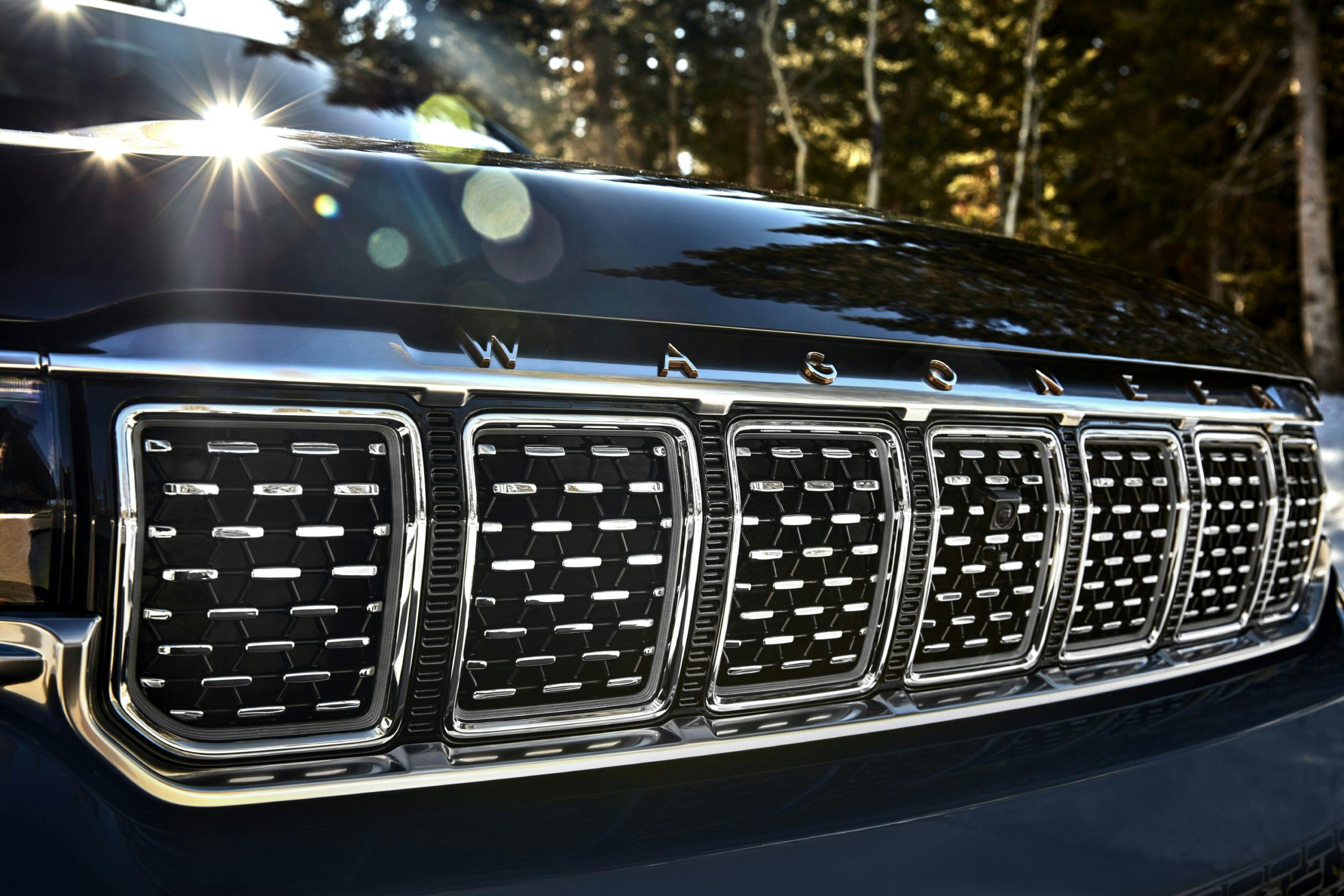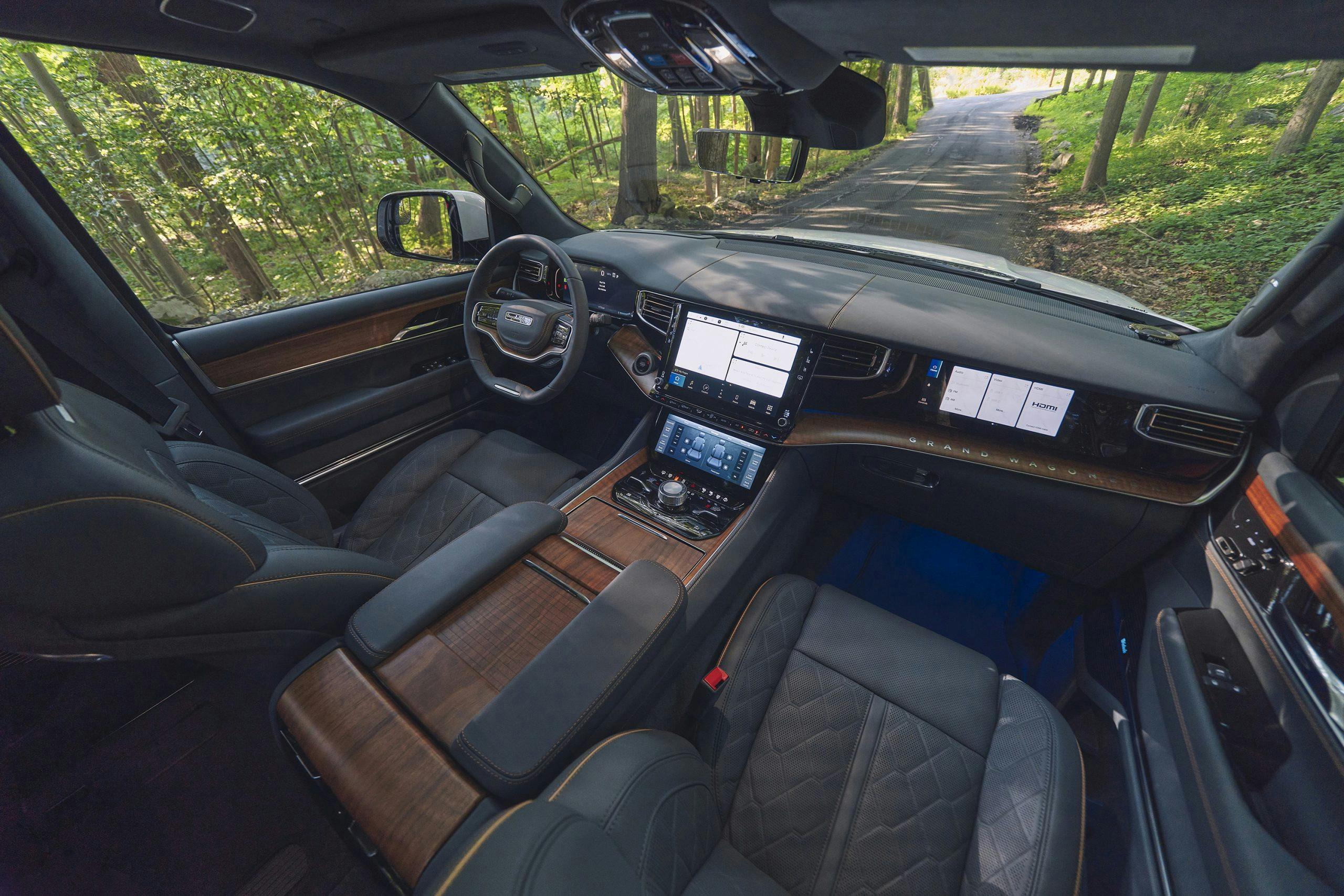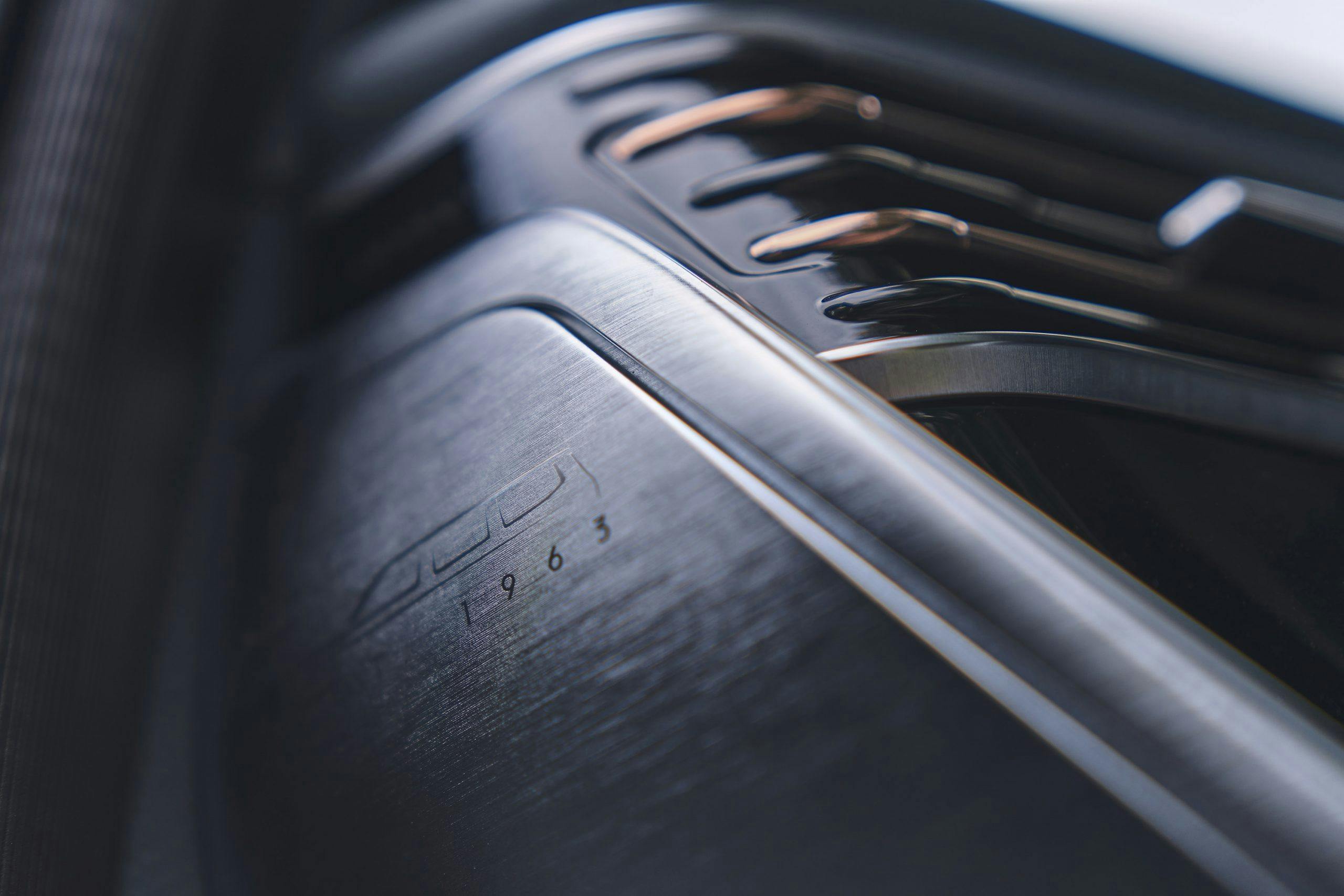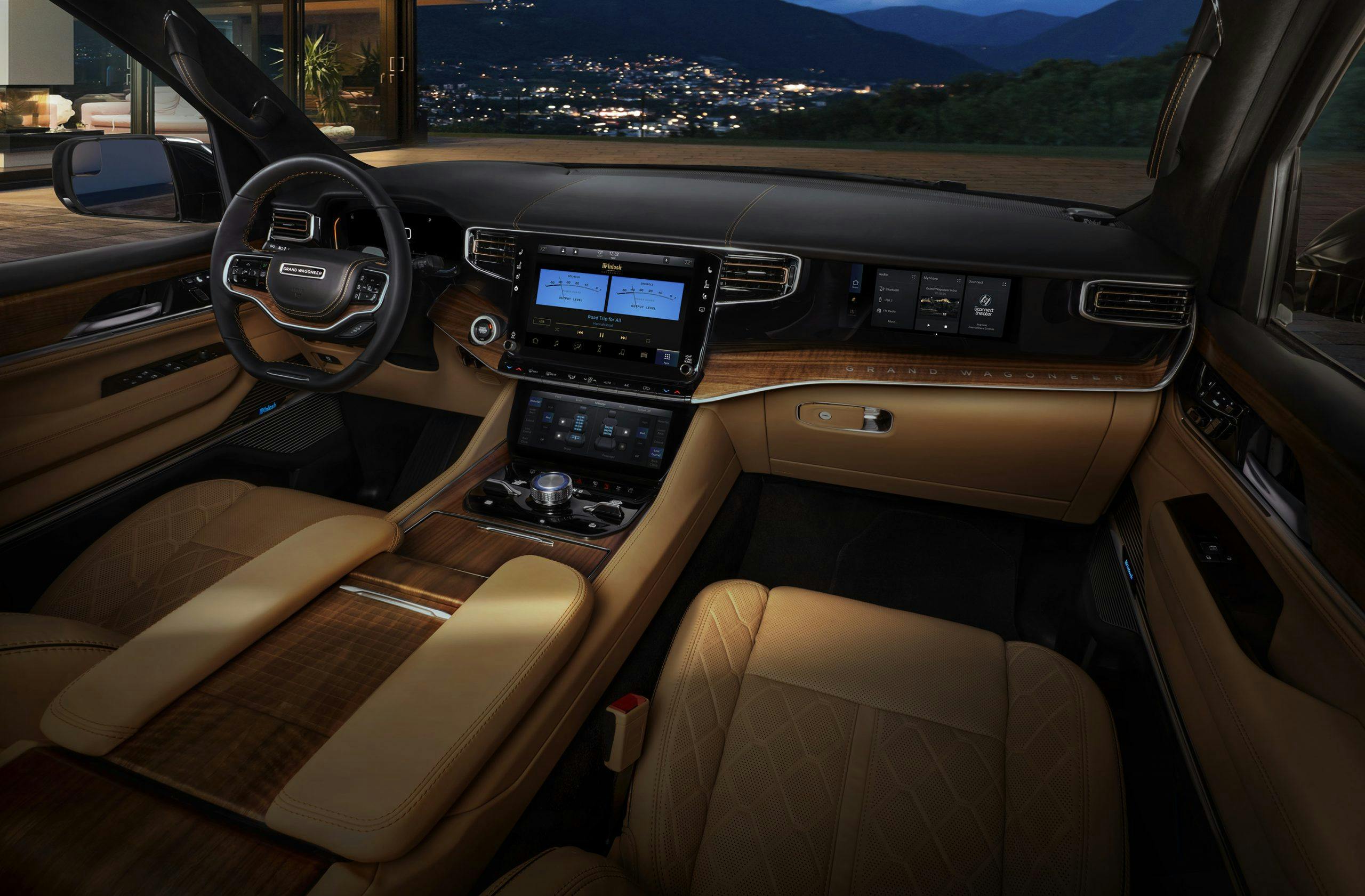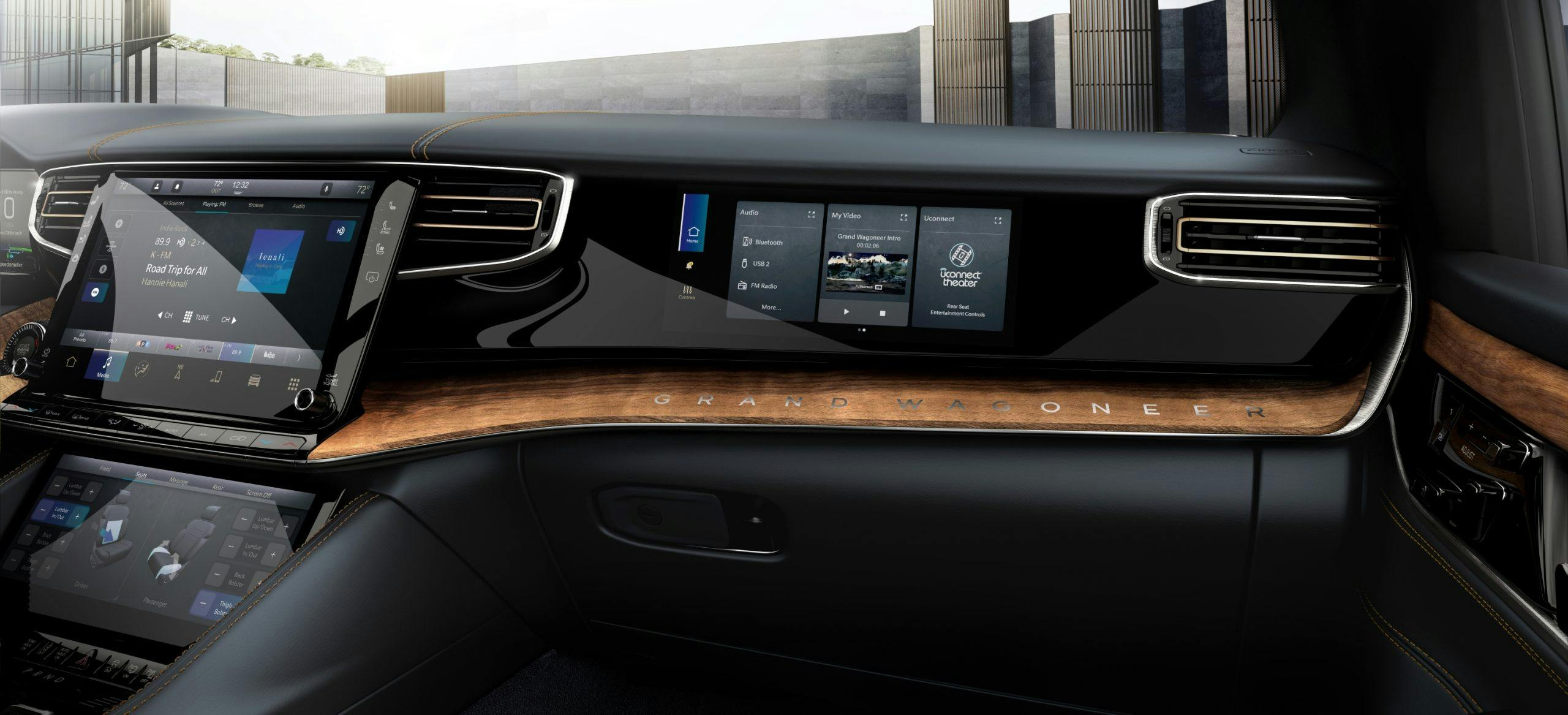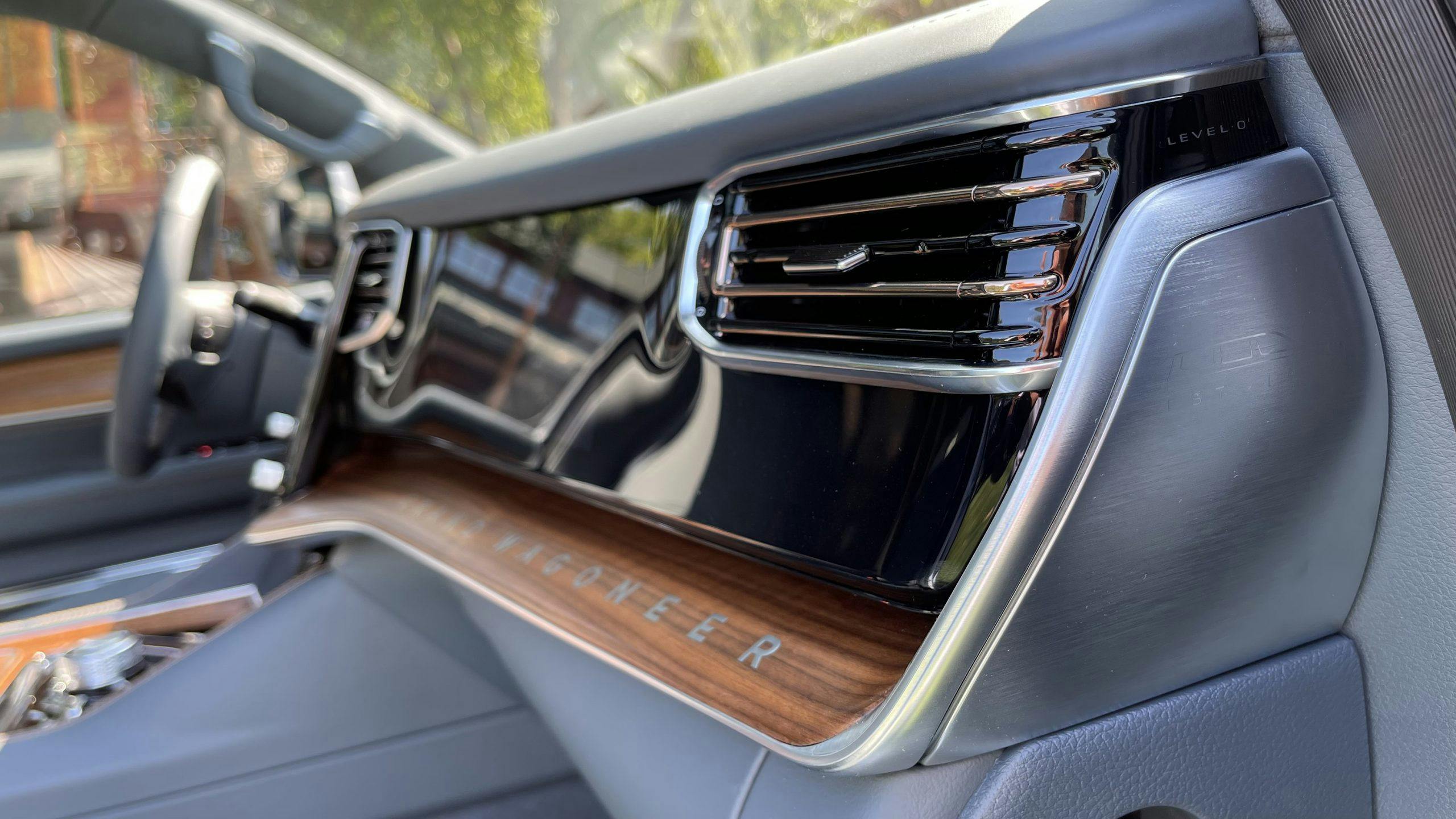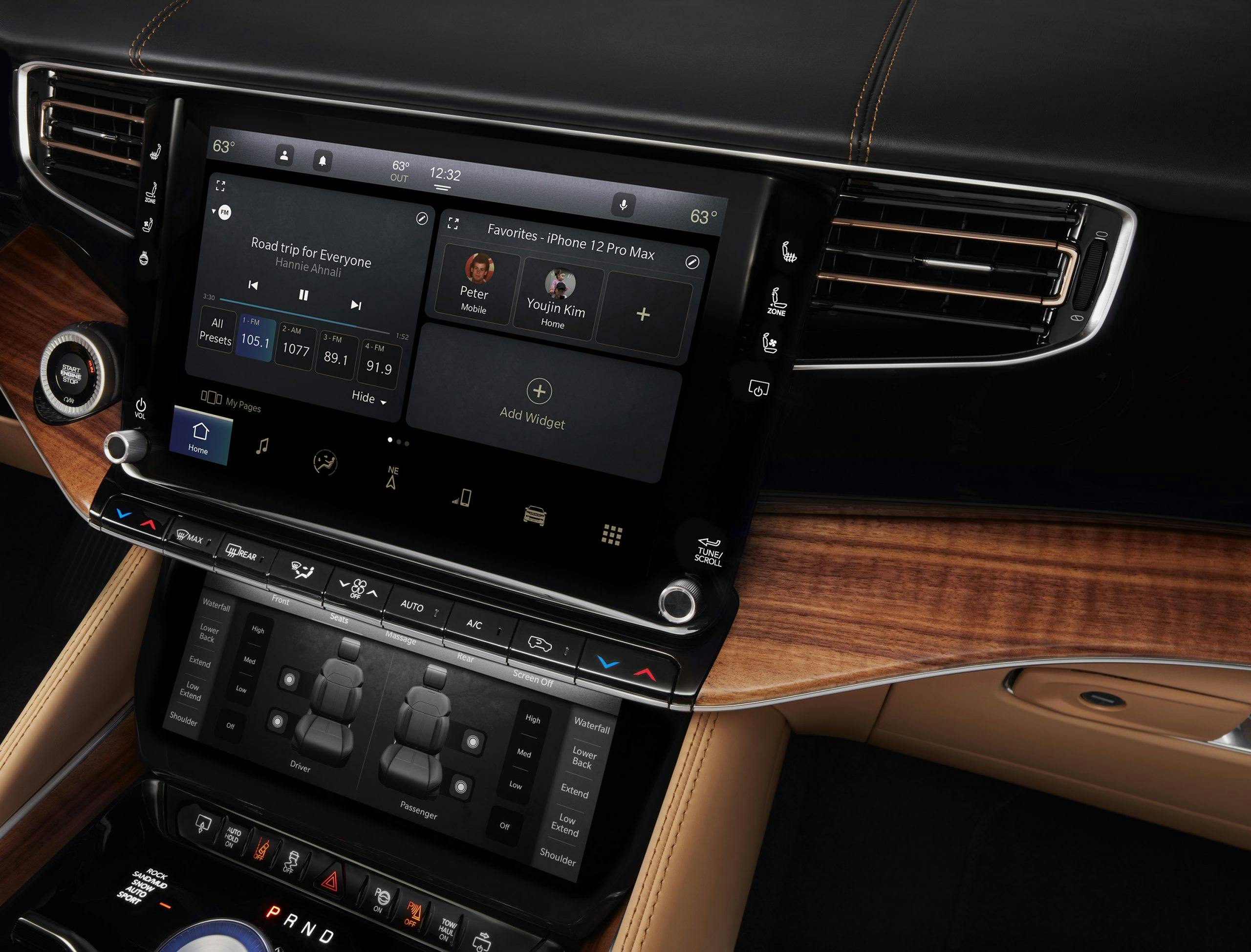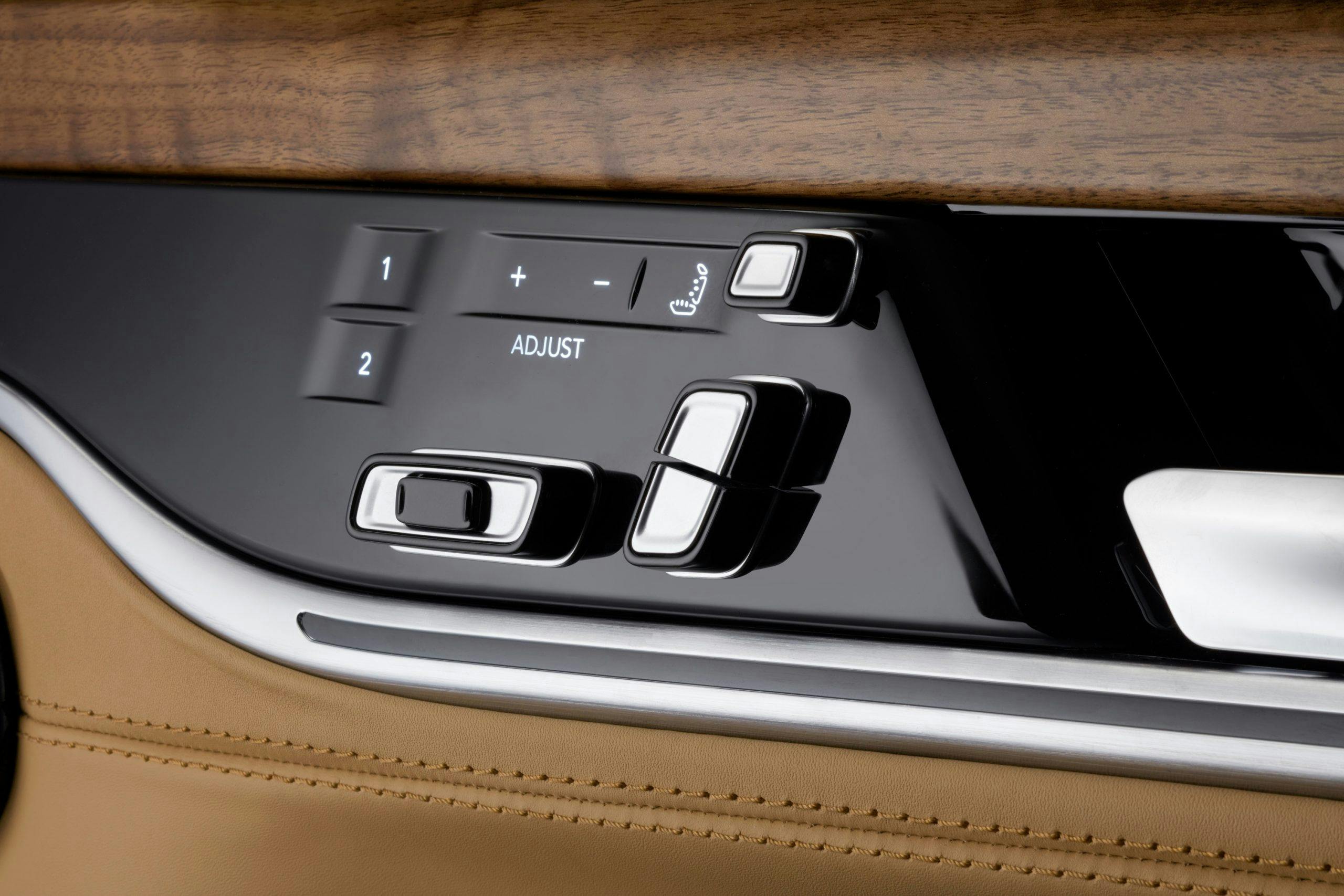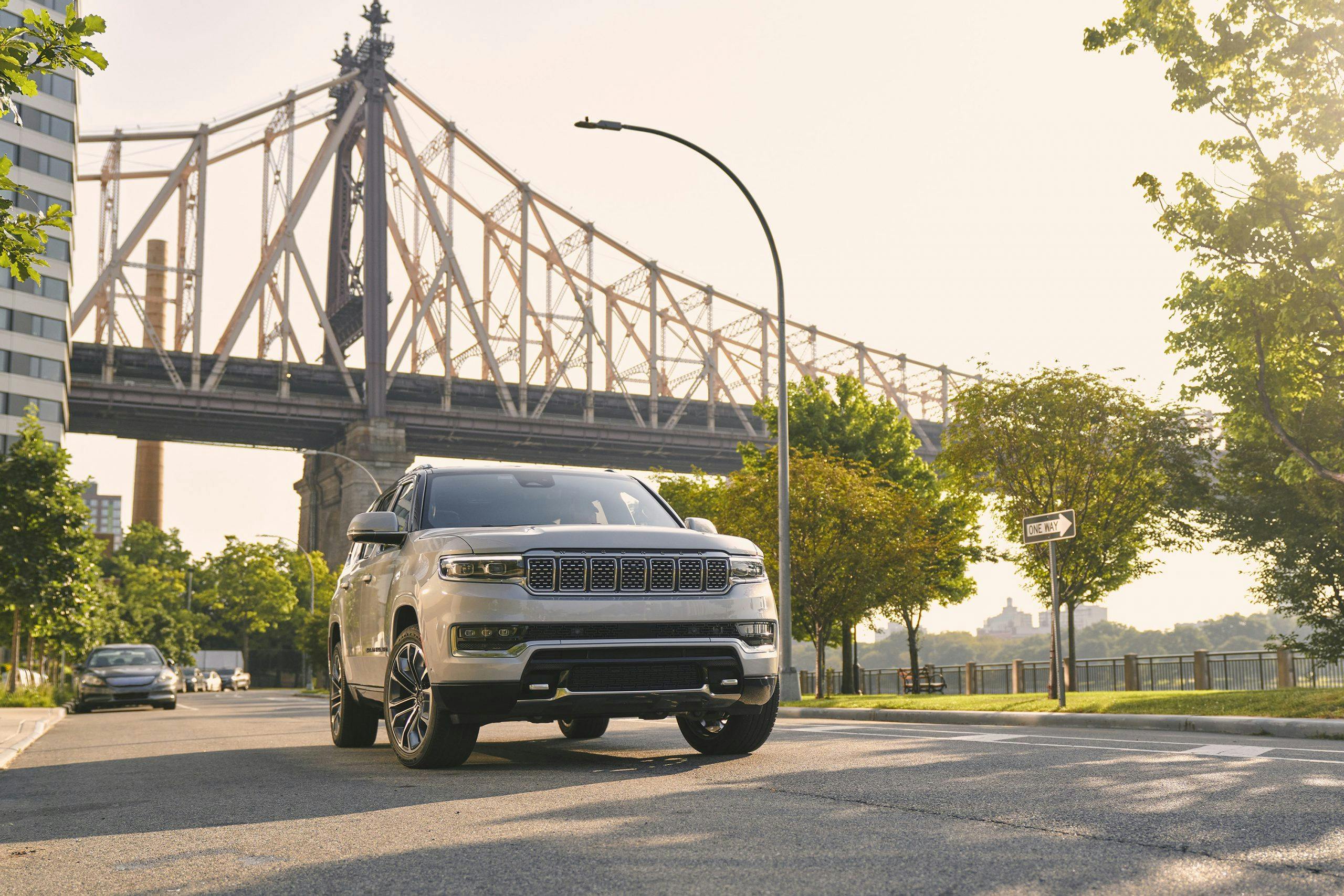Media | Articles
First Look Review: 2022 Grand Wagoneer Series III 4×4
It took the lion’s share of my concentration to maintain the precious inches of space between myself and the MTA Bus, just to my left. We charged on in lockstep via State Route 9A in Lower Manhattan, finally coming to a stop at one of the myriad stoplights punctuating the northward route aimed at the George Washington Bridge. As a second bus pulled up on my right, obviously mocking me, an audible groan escaped my body. While stuffed betwixt two NYC people-haulers, there are no design tricks, sensors, nor cameras that can hide the fact that the Grand Wagoneer is a big vehicle. But it’s also a big deal; some passengers were looking out the window, taking a moment to size up the massive Jeep.
Witness the Grand Wagoneer in all its glory: a bad and bougie, body-on-frame Birkin bag with four-wheel drive and a weighty name. This is a familiar formula: take a truck frame, adjust as needed (in this case revise for independent rear suspension in place of a solid axle), add truck running gear (the 6.4-liter Hemi V-8 from the Heavy Duty Ram, but with different intake and exhaust systems), drop on a massive body, and turn the knurled swank knob up to 11. The recipe has done wonders for Cadillac, GMC, and Lincoln, so it’s about time Stellantis got in on the action. Nothing says “profit” like a huge luxury vehicle half as large as a city bus, toting around a single American nuclear family.

We sampled a Grand Wagoneer in the heart of the Big Apple, as well as on the scenic rolling hills of upstate New York. Not only is the New York metropolitan area Jeep’s most popular locale sales-wise, that green haven to the north of the concrete jungle is also home to considerable old-money wealth.
I spent the majority of the drive in a top-tier Grand Wagoneer Series III. For a base MSRP of $105,995 including a $2000 destination fee, the Series III stocks nearly every luxury option in the Grand Wagoneer arsenal. The only add-ons were a $1995 rear seat entertainment package, a $995 heavy-duty trailer tow package with a trailer brake and upgraded engine cooling capacity, some fancy $995 22-inch wheels, and special exterior paint for $595. All-in, the tester totaled $110,575. That’s a hefty sum, but not unheard of in this price bracket—Escalades can climb to $115,000 without too much effort. The Navigator, which is due for a refresh any day now, will likely inhabit that same space. People are prepared to shell out for truck-derived, Nimitz-class rolling bunkers like this.
Despite sharing a name with the original American luxury SUV, the new Grand Wagoneer doesn’t take many design cues from that OG 4×4. Mark Allen, head of Jeep exterior design, says that departure is intentional. Allen explained that world of architecture was more of an inspiration for the Grand Wagoneer than the automotive realm. The result is a vehicle with prominent vertical lines, especially aft of the driver door. Allen admits there’s “a lot of acreage” on the exterior of the vehicle. Some angles hide that heft better than others. The Grand Wagoneer’s few bad angles (rear three quarter, particularly) aren’t ameliorated by Jeep’s stingy color palette—by far the most meager in this class of vehicle. Hues aside, it’s nice to see designer exercise some restraint in rendering the seven-slat grille up front. It’s simple, stately even. A gaping, angry, chrome-clad face is apparently not required of a vehicle in this class. Looking at you, Yukon Denali.
Marketplace
Buy and sell classics with confidence
Compared to a standard-length Escalade, the Grand Wagoneer is 2.6 inches wider and 3.7 inches longer. Big is the point, after all. This customer wants to feel entombed in several tons of steel and rubber. “I’m bigger than you. Me changing into your lane is your problem, not mine.” If nothing else, the Wagoneer is a rolling status symbol of American luxury which Stellantis also plans to sell in Canada and China.
No matter what continent the Grand Wagoneer finds itself on, the cabin is sure to impress. This is more than just a Jeep in some Louboutin loafers. There’s wood, supple leather, and shapely trim pieces that put the Grand Wagoneer on par with the sumptuous atmospheres Cadillac, Lincoln, and GMC have spent decades cultivating. And unlike the ho-hum exterior finishes, the Grand Wagoneer’s interior offers two impressive interior colors—Blue Agave and Tupelo—alongside the usual white and black. Both leather tones make lounging in this cabin feel like proper oasis. You’ll have to spring for at least the $95,995 Series II Wagoneer to get Blue Agave, and for that sweet, sweet Tupelo leather, selecting the $105,995 Series III is required.
Stellantis expects these high-content trims to sell well, and such lovely interiors will likely help seal many deals on the showroom floor. If nothing else, pops of color draw your eyes away from some of the less impressive areas of the cabin. The high-gloss black plastic around the 12-inch center infotainment screen and 10.25-inch passenger screen feels flimsy and remains a nightmare to keep clear of oily thumbprints. What’s more, I’m still not convinced that the G R A N D W A G O N E E R lettering across the dashboard trim isn’t a cheap sticker. When the rest of the space is so successful, small faults are all the more apparent.
Passengers behind the first row are in for a real treat. Second and third row seats aren’t just spacious, they’re also nicely cushioned. Optioned correctly, the middle row gets a center console very similar to the one between the first-row chairs, with a 10.25-inch screen for climate control duties.

The Grand Wagoneer offers just one engine, a 6.4-liter Hemi V-8 similar to the one found in the heavy-duty Ram trucks. The revised intake and exhaust bump the Grand Wagoneer’s power figures to 471 horsepower and 455 lb-ft of torque, gains of 61 ponies and 26 lb-ft over the Ram 2500. A ZF Torqueflite eight-speed automatic is the only gearbox. Tick that heavy-duty towing package and you can lug up to 9850 pounds. Jeep’s top-of-the-line QuadraDrive II four-wheel drive system is standard, regardless of what series you choose. With that comes an electronic limited-slip differential and nifty hill descent control—both helpful pieces of tech should you take a wrong turn and find yourself suddenly on a rocky hill on the back section of your Wyoming mountain retreat.

On the go, the Hemi is content to just lope around, wordlessly supplying a raft of torque whenever necessary. The Quadralift air suspension did an admirable job of ironing out the nastiest sections of road on our way to the day’s destination near Bedford, New York. The Navigator’s adaptive coilover suspension is truly no match the Grand Wagoneer’s cloud-like ride. Body motions are similarly held in check, a reassuring feeling when you’re negotiating a parkway choked down to one lane with concrete barriers close by on either side.
Still, as with the design, the Wagoneer’s driving dynamics can be fussy at times. Every so often the torque converter seems to unlock a little too quickly, forcing the transmission to suddenly play catchup, resulting in a crass thunk. It should come as no surprise, too, that the Grand Wagoneer is remarkably thirsty vehicle. The EPA rates a Grand Wagoneer at just 13 mpg city, 18 mpg highway, and 15 mpg combined. That’s worse than the Escalade and the Navigator, which offer 14/19/16 and 16/20/17, respectively. Of course, buyers in this arena aren’t likely to care much about fuel prices, but a dramatic rise in the price of gas might change that calculus.
Most disappointing of all, however, is the Grand Wagoneer’s infotainment interface. Stellantis’ UConnect system is routinely the top of its class, which is why the Grand Wagoneer’s missteps here are especially puzzling. The 12.3-inch digital cluster in my Series III tester had more than one meltdown while navigating through the day’s waypoints, one time going so far as to draw a straight line from a point on the map to the destination, completely forgoing following any marked roads. The digital equivalent of “I dunno dude, you figure it out” was downright alarming. The potential saving grace: These were all pre-production units, and I’d hope most these issues will be rectified by the time Grand Wagoneers start arriving in dealership lots next month. Yes, there’s wireless Apple CarPlay and Android Auto capability, but that’s not an acceptable crutch in a luxury machine costing north of six figures. If Mercedes can make it work in a GLS, Jeep should be able to deliver as well.
The Wagoneer and Grand Wagoneer nameplates are, by Stellantis’ own definition, “Premium extensions of the Jeep brand.” In practice, that means the vehicles wear no visible Jeep badging, the same way the Ford Mustang or new Bronco are conspicuously lacking blue ovals. But at the same time, the Grand Wagoneer sports on its face the same seven-slat grille Jeep slaps onto a $25,000 Renegade. Cross-town rivals stand their luxury products up in entirely unique brands, going to considerable lengths to distance them from their lesser siblings. That predicament is sure to invite a certain criticism Stellantis would rather sidestep: “Six figures for a Jeep?” Fair question.
If prospective buyers can be convinced to unhitch the Grand Wagoneer from its Jeep roots, there’s a genuinely compelling full-size SUV here that should give the other Detroit automakers pause. The Grand Wagoneer is powerful, luxurious, comfortable, and distinctively styled. It certainly beats taking the bus.
2022 Grand Wagoneer Series III 4×4
Base Price/As Tested: $105,995/$110,575
Highs: Superb cabin, supple ride, hearty engine. A luxurious new entry to a popular segment.
Lows: A few angles are not easy on the eyes. Big enough dimensions to occasionally be unwieldy. Struggles to both lean on Jeep cachet and also stand apart from it.
Summary: An icon returns, without wood paneling but with the same potential to capture the hearts of well-off American families. Oh, and it’s got a Hemi.

